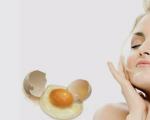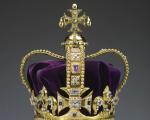The correct daily routine for a teenage student. Schoolchild’s daily routine - what it should be and how to create it
Preparing for the first of September, parents make sure that their child has a beautiful school uniform and study supplies good quality. And, as a rule, they don’t think about planning their daily routine for the period of study in advance.
It consists of a rational distribution of time of day into phases of activity, rest and sleep, taking into account the growing body.
Parents are obliged to organize for the student in order to ensure the best conditions, both for his work and for leisure. His health directly depends on this, physical development, school performance.
The student’s daily routine, organized correctly, is based on the strict alternation of its elements (getting up in the morning, eating, cooking homework etc.). When they are performed in a certain order, every day during the same period of time, the central nervous system forms connections that facilitate the transition from element to element, spending a minimum of energy on their implementation.
When compiling a student, it is necessary to take him into account age characteristics, first of all - After all, a simple workload for middle-aged and older students will be too much for schoolchildren junior classes.
Every morning a schoolchild should begin with exercises that drive away any remaining drowsiness and give a charge of vigor for the day. Main activities of children school age- studies. An important point is to introduce children to physical labor (school workshop, classes in clubs, help with household, work in the garden and vegetable garden, etc.).
Preparing homework takes junior schoolchildren from one and a half to two hours, middle school students spend two to three hours on this, and high school students need three to four hours. It is not recommended to do homework immediately after returning from school. The break between school and home classes should be at least two and a half hours, and most of the time should be spent walking and playing outdoors. Students of the first shift should begin preparing homework no earlier than 16-17 hours. And the daily routine of a second-shift student involves starting homework from 8 - 8.30 in the morning. After completing them, take a walk in the air. Moreover, the parents of these schoolchildren must ensure that they do not complete their homework in the evening, after coming from school.
When performing tasks at home, it is advisable to take a ten-minute break every 40-45 minutes and ventilate the room. To complete homework, the student must be provided with a calm environment.
The schoolchild's daily routine also provides time for activities of interest (drawing, reading, music, design) - from one hour for younger students to two and a half hours for older ones. Schoolchildren also mandatory should be involved in feasible domestic work.
Schoolchildren's strict adherence to food intake certain time promotes the production conditioned reflex, causing appetite, and better absorption of nutrients, and also becomes the key to health.
The student’s daily routine ends with evening hygiene procedures, for which 30 minutes are allotted. During this period, the student must also bring his shoes and uniform into proper shape.
A child's sleep time at night is approximately 10 hours. It is very important to go to bed and get up at the same time. Pupils younger age should go to bed no later than 21.00, and the elder - at 22.00 - 22.30. Pupils of both the first and second shifts must get up in the morning at seven o'clock.
Approximate daily routine for a schoolchild studying in the first shift:
at 7 am - rise;
from 7 am to 7.30 min. - exercises, hygiene procedures, cleaning your bed;
from 7.30 min. until 7.50 min. - breakfast;
from 7.50 min. until 8.20 min. - travel time to school;
from 8.30 min. until 12.30 min. - school lessons;
from 12.30 min. until 13:00 - travel time from school;
from 13:00 to 13:30 min. - dinner;
from 13.30 min. until 14.30 min. - sleep or rest;
from 14.30 min. until 16:00 - outdoor games or a walk;
from 16:00 to 16:15 min. - afternoon snack;
from 16.15 min. until 18:00 - work on homework;
from 18:00 to 19:00 - outdoors;
from 19:00 to 19:30 min. - dinner;
from 19.30 min. until 20.30 min. - activities based on interests (reading, quiet games, family assistance, etc.);
from 20.30 min. until 21 o'clock - preparation for next day and sleep (cleaning shoes and clothes, hygiene procedures);
from 21 o'clock - sleep.
An example of a daily routine for a primary school student studying in the second shift:
at 7 am - rise;
from 7 a.m. to 7.15 min. - exercises, hygiene procedures, cleaning your bed;
from 7.15 min. until 7.35 min. - breakfast;
from 8 a.m. to 10 a.m. - work on homework;
from 10 a.m. to 11 a.m. - activities based on interests (music, reading);
from 11 o'clock until 11.30 min. - second breakfast;
from 11.30 min. until 12.30 min. - walk;
from 12.45 min. until 13:00 - dinner;
from 13:00 to 13:20 min. - travel time to school;
from 13.30 min. until 18-19 hours - school classes;
from 18-19 hours to 20 hours - walk;
from 20:00 to 20:30 min. - dinner;
from 20.30 min. until 21.30 min. - classes based on interests;
from 21.30 min. until 22:00 - preparation for the next day and bedtime (cleaning shoes and clothes, hygiene procedures);
from 22 o'clock - sleep.
Daily routine helps normal development child, strengthening health, nurturing willpower, teaches discipline. They create a daily routine taking into account the state of health, age-related anatomical-physiological and individual characteristics child. The daily routine provides for a certain duration various activities, sleep, rest, regular meals, compliance with personal hygiene rules.
It is necessary to teach a child to follow a routine from the very beginning of his life: a certain time of sleep and wakefulness, feeding, walking. This not only makes caring for the child easier, but also gradually, with age, accustoms him to order and neatness; At 1.5 – 2 years old children switch to disposable nap, depending on the weather, walks on fresh air take 3 – 4 hours. It is recommended to exercise daily 1 – 1.5 hours after breakfast physical education child.
Research by physiologists and hygienists has established that the child’s body has the highest working capacity in morning hours. Therefore, at this time with children preschool age The most labor-intensive activities should be carried out - drawing, modeling, working with scissors.
In the afternoon, study time should be reduced and rest time increased. Stay in the air for 4 hours. The daily routine of preschoolers must include morning exercises, outdoor games, and physical exercises aimed at developing basic movements - walking, running, climbing.
The nutrition of children over 3 years old differs little from the nutrition of adults. A sufficient amount of vitamins, proteins, and carbohydrates is necessary. You should eat food no earlier than 30 minutes after playing or walking, and have dinner 1 – 1.5 hours before bedtime.
It is necessary to instill in the child hygiene skills; teach children to wash themselves, brush their teeth, etc. Until the age of 6, the child sleeps once during the day. Parents should gradually prepare the child for bed, calm him down after playing, and monitor his evening dressing.
Entering school is a turning point in a child's life. Exceeding the permissible level of study load, lack of routine academic work, good rest, physical labor, enough motor activity lead to exhaustion of the student’s nervous system, to fatigue and weakening of the body, to a decrease in its resistance to various infections. It is important to teach your child to properly regulate the time of educational work at home: alternate types of activities according to various subjects, take a break between classes of 10–15 minutes, during which the tension decreases and the eyes rest.
You should start preparing your lessons with written work, and then move on to oral work. Outdoor recreation for schoolchildren should be properly organized. Walks and games should last at least 3 hours a day, with half of this time falling between classes at school and at home.
Normal sleep is very important to restore strength and performance of the body. Children 7 - 10 years old need to sleep at least 10 - 10.5 hours, teenagers - at least 8 - 9 hours, otherwise their performance drops by 30%. Chronic lack of sleep, like mental fatigue, is the cause of irritability, rudeness, and absent-mindedness. Excessive stress should be avoided, which can disrupt normal sleep and have a harmful effect on the child’s condition.
Much attention The schoolchild's daily routine should include nutrition. Right organized regime nutrition (4 – 5 times meals) has great importance for his normal physical and nervous mental development. The child should have dinner 1 – 1.5 hours before bedtime.
Every morning the child should do exercises; this should become a habit. Organizing schoolchildren's days off and vacations requires serious attention from parents. The basic elements of the daily routine (sleep, food, etc.) should remain the same as in common days, but at the same time, maximum time should be allocated to being outdoors, participating in hikes and excursions, visiting museums and theaters. On weekends, you need to let your child sleep.
More on the topic: Daily routine for children and teenagers:
- Hygienic requirements for the daily routine, educational activities, personal hygiene of primary schoolchildren and adolescents.
Teenager's daily routine and personal hygiene
In order to protect teenagers from diseases, to raise them to be physically strong, cheerful, hardworking, and able to overcome any obstacles, it is first necessary to teach them to follow a daily routine. A teenager spends most of his working life in educational institution. It is very important that the skills he acquires here are reinforced at home.
The concept of “daily routine” includes the following points:
1) sufficient and complete sleep with strictly established times of getting up and going to bed;
2) balanced diet at the same hours;
3) a certain time for preparing homework, outdoor recreation, physical exercise, free activities and helping the family.
It must be emphasized that when preparing lessons, you need to take breaks of 10 minutes every 45 minutes. The lack of a clear, strictly observed regime has the most unfavorable effect on a growing organism. Students' productivity decreases, their academic performance declines, and over time, adolescents begin to show signs of health problems.
Personal hygiene occupies an essential place in the daily routine. As can be seen from the tables below, adolescents should get up in the morning no later than 7 a.m. This will allow them to complete all routine aspects related to personal hygiene before the start of classes.
A schoolchild's day begins with morning hygienic exercises - exercises that help the student relieve drowsiness and quickly engage in educational activities. After morning exercises, the student cleans his bed and then begins water procedures: he wipes his body to the waist with a hard terry towel moistened with water, or takes a shower. The water temperature is gradually lowered by 1 ° C every 2 - 3 days and brought from 28 ° to 18 - 17 ° C. Students - constantly performing water procedures, are less likely to suffer from influenza, sore throat, and acute respiratory diseases.
After performing physical exercises and hardening procedures, you should thoroughly wash with soap and brush your teeth. It should be remembered that the thinness, tenderness and relatively greater vulnerability of the upper layer of skin in adolescent children create fertile ground for various skin diseases.
The skin consists of three main layers: the outer layer - the cuticle (epidermis), the skin itself and subcutaneous fatty tissue. The cells of the outer layer are thin and delicate, they constantly die and are removed, and new ones grow to replace them. If a teenager's body is kept untidy, these dead cells remain on its surface, underwear, scalp (dandruff), decompose (smell bad), and in case of a cut in the skin, they contribute to the appearance of inflammatory processes.
In the second layer - the skin itself - there are connective tissue cells that give the skin elasticity, strength, extensibility, numerous nerve endings, tiny capillaries, lymphatic vessels, sweat and sebaceous glands, hair roots. Sweating occurs through the sweat glands, helping to maintain normal body temperature.
The sebaceous glands provide the skin with lubricant, which protects the outer layer from drying out and cracking. The excretory ducts of the sebaceous glands can become clogged with untidy skin, especially in adolescence when the glands intensively secrete lubricant. The fat remaining in the duct decomposes and irritates the skin, which often leads to the appearance of acne. Naturally, the kids don’t like this, and they self-medicate, squeezing out acne in different ways, risking introducing an infection into the blood. In addition, the delicate skin of the face is injured: small scars form on it.
The third layer - subcutaneous fatty tissue - represents a kind of “pantry” where fat reserves in the body are stored. This layer of skin helps retain heat. The skin has self-disinfecting properties; the special substance in it kills many types of pathogenic microbes.
In order to avoid contamination of the skin with cuticle cells (epidermis), sweat, excess sebum, and sometimes pathogens and worm eggs, a teenager must constantly monitor the cleanliness of the skin and underwear.
The daily routine for a teenager is of paramount importance. Compliance with it will allow the teenager’s body to develop properly, and will also help prevent diseases.
When creating a regime or daily routine for a teenager, it is impossible to use any one rigid scheme, since every teenager, every family has its own characteristics, its own traditions, but it is of course possible to use recommendations that are of a general nature.
For correct mode a teenager’s day must take into account the rhythm, a certain alternation various types classes. If they are performed in a certain sequence and at the same time, then “habits” will be created in the adolescent’s central nervous system that facilitate the transition from one type of activity to another. It is necessary to try to maintain temporary moments of the daily routine. This must be taken as a basis when creating a daily routine.
When creating a daily routine for a teenager, you need to consider the following:
- The need for mandatory alternation of work and rest.
- Meals should be regular and complete.
- Night sleep should be no less than the time that is sufficient for the teenager to fully rest, as well as observing the time of getting up and going to bed.
- Clearly defined time for morning exercises, gymnastics, and hygiene procedures.
- Clear definitions of time for completing educational homework. It is also necessary to provide 10-15 minute rest breaks during classes.
- Decide on the duration of rest, preferably with longest time on open air.
The morning should begin with exercises and gymnastics, lasting 10-15 minutes. Gymnastics strengthens the work of the heart, ventilates the lungs, also improves metabolism in the body of a teenager and, in general, has beneficial influence on the nervous system.
Then water and hygiene procedures are necessary. You can take a shower, douse yourself with water, or simply dry yourself off. On morning toilet you should spend no more than 30 minutes. All these activities prepare the teenager’s body for the work and school day.
When you return from school, do not immediately start doing homework. It is necessary to rest for some time, preferably actively. It is necessary to provide 1–2 hours of time for walking and being in the fresh air.
Preparing homework assignments for elementary school students should take 1.5 - 2 hours, middle school students - 2 - 3 hours, and for high school students 3 - 4 hours.
Before going to bed, it is advisable to take an evening walk or quiet activities, so that when the teenager goes to bed, the nervous system is not in an excited state, but in a calm one.
The table shows exemplary mode teenager's day
| List of activities for a teenager | Times of Day | |
| 12-13 years old | 14-17 years old | |
| Morning is the time to get up | 7.00 | 7.00 |
| Morning exercises, exercises, hygiene procedures, making the bed, morning toilet | 7.00 — 7.30 | 7.00 — 7.30 |
| Light first breakfast | 7.30 — 7.50 | 7.30 — 7.50 |
| The way to school, possible morning walk before classes start | 7.50 — 8.20 | 7.50 — 8.20 |
| Study, school activities | 8.30 — 14.00 | 8.30 — 14.30 |
| Hot second breakfast at school, possible walk after school (on the way home) | 14.00 — 14.30 | 14.30 — 15.00 |
| Solid lunch | 14.30 — 15.00 | 15.00 — 15.30 |
| Time for walks, games and sports | 15.00 — 17.00 | 15.30 — 17.00 |
| Light afternoon snack | 17.00 | 17.00 |
| Time to prepare homework assignments | 17.00 — 19.30 | 17.00 — 20.00 |
| Dinner and optional activities based on interests | 19.30 — 21.00 | 20.00 — 21.30 |
| Getting ready for bed - washing, cleaning clothes and shoes | 21.00 — 21.30 | 21.30 — 22.00 |
| Night sleep | 21.30 — 7.00 | 22.00 — 7.00 |
Although a teenager needs extracurricular activities: music, sport sections, interest groups, but don’t overload him. Everything should be in moderation.
Adolescence is a time of dramatic physiological changes. Between the ages of 9 and 13, a number of different physical and emotional changes associated with puberty. During this period, the body of a teenage girl undergoes significant changes. In addition, attitudes towards peace and friendship are changing. Changes do not pass by and emotional sphere. To make adolescence less painful, follow the correct daily routine. This will help you cope with change while staying healthy and happy.
Steps
Part 1
Start of the day- Use natural deodorant, for example, Lush. If such a deodorant does not provide you with the desired level of protection, choose an antiperspirant.
-
Get dressed. If your school requires you to wear a uniform, be sure to comply. If not required, make sure your clothes are clean. Wear clothes that highlight your personality.
Style your hair. Get a hairstyle that you like. You can curl your hair or, on the contrary, straighten it. The most important thing is that you should like the chosen hairstyle. You should feel confident. If you exude confidence, people around you will certainly notice and treat you accordingly.
Decide whether you will wear makeup. At this age, many girls begin to experiment with makeup, but it is up to you to decide whether you want to wear makeup. Consider whether you have the desire and time to do this. Do makeup just for fun.
Eat a healthy breakfast. It's important to start your day with breakfast because it will help you concentrate at school. Plus, you'll have enough energy to next appointment food.
Brush your teeth. Plaque and food particles left over from breakfast mix with bacteria in the mouth to cause an unpleasant odor. Good hygiene oral health significantly reduces the risk of developing caries and keeps your smile shiny and beautiful.
Grab your lunch and backpack and go to school. Give yourself enough time to prepare so that you don't have to rush to school. Start your day on a positive note.
Part 2
Follow good regime At school-
Come to school on time. Be a good student. This includes visiting and Active participation in the lesson, as well as the desire and ability to learn.
- To get to school on time with necessary supplies(books, pencils, homework, etc.), self-discipline is required from you. Teachers value students who come to school on time, no matter the cost, and also complete all their homework.
-
Eat a healthy lunch. Some schools offer a wide range of food and drinks for students. Other schools do not have such diversity. Even if you bring lunch from home, give priority healthy foods, which will fill you up and give you the necessary energy for the rest of the day.
Visit the restroom. Although you may have little time between classes, still make sure to visit the restroom to relieve yourself. bladder(and intestines, if necessary) about once every four hours.
Maintain friendly relations. Unfortunately, misunderstandings and conflicts very often occur in adolescence. Don't give in to peer pressure to do things you don't want to do.
Part 3
End of the day-
Take a shower. Remember, during adolescence, sweating increases, which leads to an unpleasant odor. It is the bacteria contained in sweat that are the source of the odor emanating from the body. Therefore, it is extremely important to take a bath or shower regularly. Be sure to shower after exercising.
- Be sure to wash your face if you have oily skin, if you were sweating or if you were doing makeup.
Do your homework after school. Typically, middle school students are assigned a lot of homework. Therefore, teenagers have to devote a lot of time to completing it. If necessary, you can ask your parents or older sibling for help.
Exercise. When planning your day, be sure to set aside time for exercise. Exercise improves your health and helps reduce stress. Be sure to include exercise in your schedule. This is especially important to do on days when you don’t have a physical education lesson at school.
Eat a healthy lunch. It is very important to include a variety of foods in your diet. Lunch is the most important meal of the day. Therefore, include only healthy foods in your lunch menu.
-
Make sure you get a good night's rest. Between the ages of 9 and 13, a teenager should sleep 10 to 12 hours each night. While each person's sleep needs are different, to determine if you're getting enough sleep, stick to next rule: If you wake up feeling rested and energized, you're probably getting enough sleep. If you have trouble waking up in the morning and feel weak, it's likely that you're not getting enough sleep.
Visit the toilet. When you wake up in the morning, first of all, go to the toilet. Prolonged retention of urine leads to bladder overflow. In this case, the risk of developing infections that cause severe pain increases.
Wash yourself. During adolescence, the skin glands begin to secrete an oily substance called sebum. Excess sebum makes the skin look oily and shiny, clogs pores and increases the risk of acne. This is due to hormonal changes. Of course, such changes are part of the growing process, but you will have to include an additional item in your regime that will help you avoid many skin problems.
Use deodorant. Occurs during adolescence hormonal changes, as a result of which the process of sweating is significantly enhanced, and the smell of sweat becomes more pronounced. If you are concerned about the problem unpleasant odor sweat, use a deodorant that masks the odor or an antiperspirant that stops the process of sweating in the armpits.



